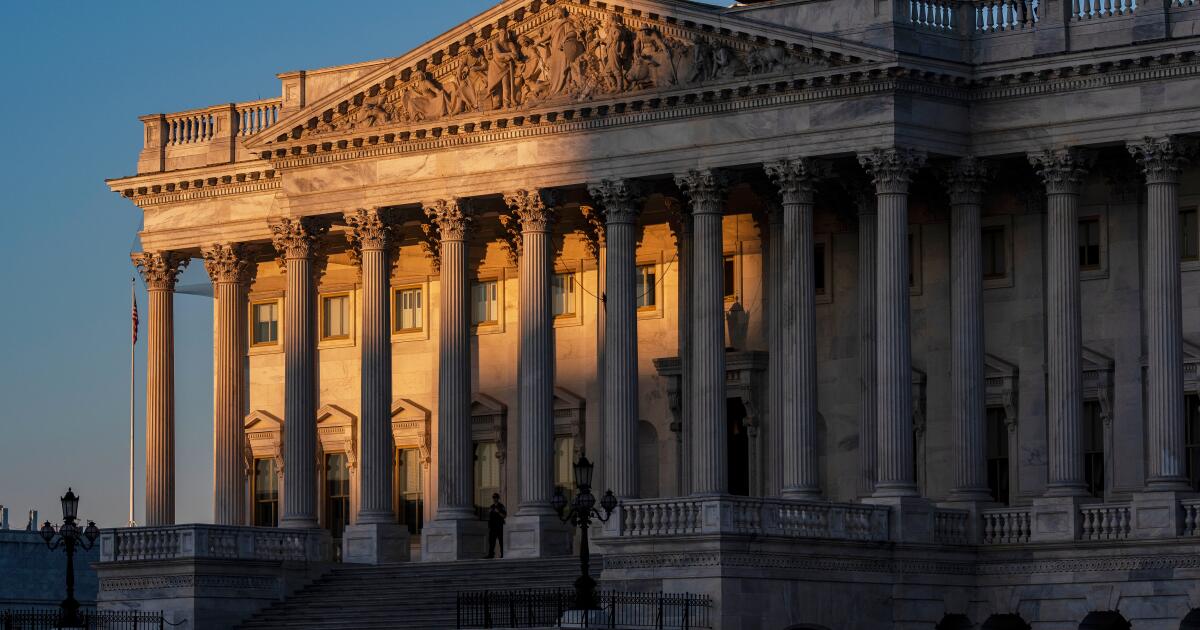Troops will miss paychecks next week without action on the government shutdown
WASHINGTON — Heather Campbell lost her job working for a food bank over the summer because of federal funding cuts. Her husband serves as an officer in the Air Force, but now he’s facing the prospect of missing his next paycheck because of the government shutdown.
If lawmakers in Washington don’t step in, Campbell’s husband won’t get paid on Wednesday. Because the couple lacks the savings to cover all their expenses, they expect to survive on credit cards to pay the mortgage and feed their three children, racking up debt as the political stalemate drags on.
“You’re asking us to put our lives on the line or the people we love to put their lives on the line,” said Campbell, 39, who lives outside Montgomery, Alabama, near Maxwell Air Force Base. “And you’re not even going to give us our paycheck. What? There is a lot of broken trust there.”
The nation’s third shutdown in 12 years is once again raising anxiety levels among service members and their families because those in uniform are working without pay. While they would receive back pay once the impasse ends, many military families live paycheck to paycheck. During previous shutdowns, Congress passed legislation to ensure that troops kept earning their salaries, but time is running out before they miss their first paycheck in less than a week.
“There are so many things that Congress can’t agree on right now,” said Kate Horrell, the wife of a Navy veteran whose Washington, D.C., company provides financial advice to military families. “I don’t want to assume that they’re going to be able to agree on this.”
Paying the troops has support, but it’s unclear when a deal might pass
When asked if he would support a bill to pay the troops, President Donald Trump said, “that probably will happen.”
“We’ll take care of it,” Trump said Wednesday. “Our military is always going to be taken care of.”
Rep. Jen Kiggans, a Virginia Republican and former Navy helicopter pilot, has introduced a measure to maintain military and Coast Guard salaries, and it has bipartisan co-sponsors.
The House is closed for business until next week, leaving two days to take action before Wednesday’s payday. Missed paychecks for military service members are among the most serious pressure points in the shutdown, causing political pain for the lawmakers. Several proposals have been floated for voting on stand-alone legislation that would ensure no interruption in pay, but those are not expected to be brought up for consideration, for now.
Amanda Scott, whose husband is an Air Force officer in Colorado, said the uncertainty goes beyond the stress of just getting by — it chips away at the military’s ability to retain the best people and their readiness to fight.
“How ready and lethal are you if you don’t know if you can feed your family?” said Scott, 33, of Colorado Springs, who works for a defense contractor and volunteers as an advocate for military families. “A lot of these service members are highly skilled and can go out and make much more money in the civilian sector.”
Aid is available for service members, but it’s not enough for some families
Support is available for military families through nonprofits and charities. For example, some financial institutions are offering zero-interest loans, while each military branch has a relief organization.
But Campbell said she and her husband in Alabama can’t apply for a payday loan because they’re refinancing their house. They lack a substantial emergency fund because they were paying off student loans and moved several times in the last few years to military posts. It was often challenging for her to find steady work and child care.
“The opportunity to build up savings is really difficult on just one income,” Campbell said. “I don’t know many military families that have a month’s worth of income set aside just in case, let alone multiple months’ worth.”
Jen Cluff, whose husband recently left the Air Force, said her family was on a food aid program during the 2019 shutdown. But even the Special Supplemental Nutrition Program for Women, Infants and Children, also known as WIC, which helps more than 6 million low-income mothers and young children, would run out of federal money within two weeks unless the shutdown ends, experts say.
“We made so little and had three young children,” said Cluff, 42, of San Antonio. “We were definitely a family that had very little buffer.”
If Congress had not passed legislation to pay troops during the last shutdown, missing more than two paychecks “would have been catastrophic for us,” she said.
“Resentment can grow quickly,” Cluff said of the shutdown, adding that “the general public, and many in government, truly don’t understand the daily sacrifices our military members and their families make for our country.”
Wider effects feared in military-heavy areas
The economic impact will ripple through regions with large military footprints, like coastal Virginia, home to the nation’s largest Navy base and several other installations. The area’s 88,000 active duty service members and their families likely have pulled back significantly on spending, said Rick Dwyer, executive director of the Hampton Roads Military and Federal Facilities Alliance, an advocacy group.
“Think about service members who are deployed right now around the world,” said Dwyer, who served in the Air Force during previous shutdowns. “They’re having to wonder if their families are going to be able to pay the rent, the child care bills, the car payments.”
A shutdown contingency plan posted on the Pentagon’s website cites the use of funds to continue military operations from Trump’s big tax and spending cut bill. The Congressional Budget Office has said money appropriated to the Defense Department under the new law could be used to pay active duty personnel.
It was not clear if the funding would be used for that. The Pentagon said Thursday that it could not provide information “at this time.”
Its contingency plan says it will “continue to defend the nation and conduct ongoing military operations” as well as activities “necessary for the safety of human life and the protection of property.”
Listed among the highest priorities are securing the U.S.-Mexico border, operations in the Middle East and the future Golden Dome missile defense program. The plan also noted that “child care activities required for readiness” would continue.
Raleigh Smith Duttweiler, chief impact officer for the National Military Family Association, said most child development centers on military bases are still operating. But she said most service members pay for child care off base.
“Last I checked, my kids’ babysitter doesn’t take an IOU from the federal government,” said Duttweiler, whose husband is a Marine.
Finley writes for the Associated Press. AP writer Lisa Mascaro in Washington contributed to this report.

